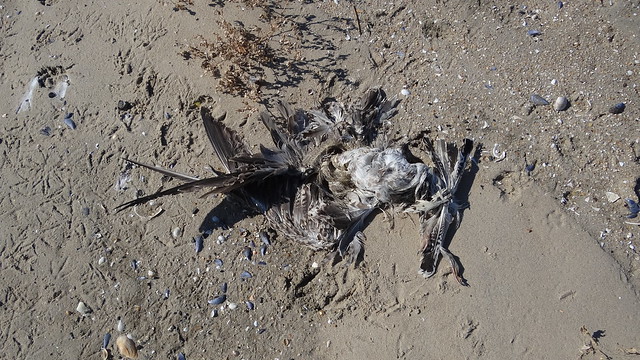I have nothing but admiration, verging indeed on awe, for those birders out there on the frontiers of identification by sound. Distinguishing the nocturnal calls of the Spizella sparrows or sorting through the flight notes of the warblers, there’s nothing these pioneers aren’t working out.
Predictably, some birders are already looking for the next cutting edge. Maybe they’ll find inspiration in a story from a long-ago autumn day on New York’s Jones Beach:
On November 7, 1948, walking along the high water line at Jones Beach, a rather large (14.75 inches) primary feather was noticed.* Picked up and passed close to the nostrils it appeared to have the characteristic odor of the Tubinares.
The feather made its way to the desk of Robert Cushman Murphy at the American Museum, who wrote on November 26 to say that the feather was “beyond any shadow of doubt that of an albatross…. It most closely resembles Diomedea chlororhynchus,” the bird we now know as the Atlantic yellow-nosed albatross.
The finder, David G. Nichols, drew the obvious lesson:
When one considers that the strong odor is the only reason that this feather was originally collected and identified, one is moved to speculate that similarly interesting plumage may occur along the beaches more frequently than is supposed. Drifted feathers might be worth some attention.
Just follow your nose.
Just a great black-backed gull this time, and no, I didn’t stop to sniff.
* Apparently the feather walked to Long Island.


